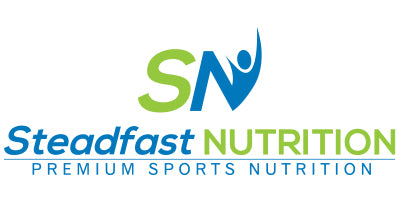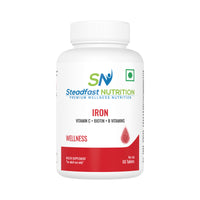Anaemia is a public health concern, affecting an estimated one-third of the global population. Like other countries, the anaemic population in India is concerning. As per NFHS 5 (National Health Survey of India)(2019-2021), 25.0 % of men (15-49 years) and 57.0 % of women (15-49 years), 31.1 % of adolescent boys (15-19 yrs) and 59.1 % of adolescent girls have iron-deficiency anaemia. The prevalence of anaemia in pregnant women (15-49 years) is 52.2%; Children of age group 6-59 months are the most vulnerable, constituting 67.1 per cent of the anaemic population.
Anaemia occurs when there aren’t adequate healthy red blood cells to carry oxygen to the body organs. There are different types of anaemia- pernicious, sickle-cell, iron-deficiency, and haemolytic. Iron-deficiency anaemia is the most common. It is a medical condition in which the body doesn't have enough iron to produce adequate amounts of haemoglobin, a protein in red blood cells that helps carry oxygen throughout the body. Without enough haemoglobin, the body can't get enough oxygen, leading to fatigue, weakness, and other symptoms.
Symptoms of Iron-deficiency Anaemia
Iron deficiency anaemia (IDA) is a condition characterised by low haemoglobin levels due to insufficient iron supply to produce red blood cells. Here are some common symptoms of IDA and relevant research studies:
1. Fatigue and weakness:
Fatigue and weakness are the most common symptoms of IDA, affecting up to 75% of patients. In a study published in the Journal of Haematology & Oncology, researchers found individuals with IDA experienced significantly higher fatigue levels than healthy individuals.
2. Pale skin:
Iron is essential to synthesise haemoglobin, which gives blood its red colour. A lack of iron can result in pale skin. A study published in the Journal of the American Academy of Dermatology found 88% of individuals with IDA had pale skin compared to 22% of healthy individuals.
3. Shortness of breath:
In severe cases of IDA, patients may experience shortness of breath due to low oxygen levels. A study published in the American Journal of Respiratory and Critical Care Medicine found patients with severe IDA had significantly lower levels of oxygen in their blood and a reduced ability to exercise compared to the control group.
4. Headaches:
Chronic headaches are a common symptom of IDA. A study published in the Journal of Family Medicine and Primary Care found patients with IDA had a significantly more headaches than healthy controls.
5. Restless legs syndrome:
Restless legs syndrome (RLS) is a condition characterised by an irresistible urge to move the legs, particularly at night. A study published in the Journal of Clinical Sleep Medicine found individuals with IDA were significantly more likely to have RLS than healthy individuals.
6. Heart palpitations:
In individuals with iron-deficiency anaemia, the heart has to work harder to pump oxygen, leading to palpitations or the feeling that the heart is beating exceptionally fast.
7. Dry skin and hair, brittle nails:
Iron deficiency causes low haemoglobin level, depriving the hair and skin of oxygen and causing it to be dull and lifeless. Iron deficiency also reduces the oxygen available to cells that cause hair growth.
These symptoms can be indicative of other medical conditions as well. If you experience these symptoms, consult a healthcare professional for diagnosis and treatment.
Causes of Iron-Deficiency Anaemia
1. Inadequate dietary intake of iron:
Iron is an essential mineral to synthesise haemoglobin, which carries oxygen in the blood. If your diet lacks sufficient iron, you may become anaemic.
2. Blood loss:
Blood loss can occur due to menstruation, bleeding ulcers, haemorrhoids, and gastrointestinal bleeding, depleting iron stores and leading to anaemia.
3. Malabsorption of iron:
Certain conditions such as celiac disease, inflammatory bowel disease, and gastric bypass surgery can interfere with the body's ability to absorb iron from food. Consumption of tea, coffee, rich in tannins/caffeine with meals hinder iron absorption.
4. Increased demand for iron:
Pregnancy, growth spurts in children, and intense physical activity increase the body's need for iron, leading to iron-deficiency anaemia if the iron intake is inadequate to meet the demand.
5. Chronic diseases:
Chronic diseases such as cancer, kidney disease, and rheumatoid arthritis can interfere with the body's ability to use and store iron, leading to anaemia.
Iron-Deficiency Anaemia Treatment
Iron-deficiency anaemia can be treated with various methods depending on the underlying cause. Treatment options may include:
1. Iron supplements:
If the anaemia is caused by inadequate iron intake, your doctor may recommend iron supplements, which can be taken orally as tablets or liquid or by injection. It is important to follow your doctor's instructions on how to take the supplements and how long to continue taking them.
2. Dietary changes:
If your anaemia is caused by a lack of dietary iron, your doctor may recommend changes to your diet to include more iron-rich foods. Foods high in iron include red meat, poultry, fish, beans, lentils, nuts, dried fruits, tofu, green leafy vegetables, and iron-fortified cereals.
3. Treating the underlying cause:
If the anaemia is caused by an underlying medical condition such as celiac disease, inflammatory bowel disease, heavy menstrual bleeding, or internal bleeding due to stomach ulcers, treating that condition may help alleviate it.
4. Blood transfusions:
In severe cases of iron-deficiency anaemia where iron supplements or dietary changes are not sufficient, a blood transfusion may be necessary to replenish red blood cells.
Follow your doctor's instructions on treatment and continue taking iron supplements or make dietary changes until the anaemia has been resolved. Regular blood tests may be necessary to monitor your progress and ensure that the treatment is working effectively.
How to Prevent Iron-Deficiency Anaemia
Iron-deficiency anaemia can be prevented by ensuring adequate iron intake through diet or supplements. Here are some tips on its prevention.
1. Consume iron-rich foods:
Eat a balanced diet that includes iron-rich foods like red meat, poultry, seafood, beans, lentils, tofu, green leafy vegetables, kale, broccoli, iron-fortified cereals, nuts, and dried fruits.
2. Enhance iron absorption:
To increase iron absorption from plant-based foods, eat them with foods high in vitamin C, including citrus fruits, strawberries, kiwi, lemon, amla, and tomatoes.
3. Limit foods that can inhibit iron absorption:
Avoid consuming foods or drinks that can inhibit iron absorption such as tea, coffee, and calcium-rich foods during meals.
4. Manage menstrual bleeding:
Women with heavy menstrual bleeding are at higher risk of iron-deficiency anaemia and should speak to their healthcare provider about ways to manage their periods.
5. Monitor for signs and symptoms:
Be aware of the signs and symptoms of iron-deficiency anaemia, including fatigue, weakness, pale skin, and shortness of breath, and speak with your healthcare provider if you experience them.
By following these tips, you can help prevent iron deficiency anaemia and maintain good health.
Health Benefits of Steadfast Nutrition’s Iron supplement
Iron is essential for various bodily functions, including the production of haemoglobin, which carries oxygen in the blood. Iron deficiency can lead to anaemia, fatigue, weakness, and other health problems. Iron supplements can help to prevent or treat iron deficiency anaemia and provide several health benefits.
1. Helps boost haemoglobin levels:
Steadfast Nutrition’s Iron supplement helps boost haemoglobin levels. It contains Iron as ferrous fumarate, Vitamin B1, Vitamin B2, Vitamin B3, Vitamin B5, Vitamin B6, Vitamin B7, Vitamin B9, Vitamin B12, and Vitamin C, which help prevent iron-deficiency anaemia. Vitamin C increases iron absorption.
2. Increase Energy Levels:
Iron helps produce energy- iron supplements can help boost energy levels and reduce fatigue as iron carries oxygen to the muscles and brain.
3. Improve Cognitive Function:
Iron is necessary for brain development and function. Iron supplements can improve cognitive function, including memory, attention, and learning.
4. Boost Athletic Performance:
Iron helps in muscle function and oxygen transport. Iron supplements can improve athletic performance by increasing oxygen delivery to muscles.
5. Strengthen Immune System Function:
Iron plays a role in immune system function. Iron supplements can strengthen the immune system by improving the function of white blood cells.
It is important to note that taking too much iron can be harmful-take iron supplements under the guidance of a healthcare provider. Overdosing on iron can lead to nausea, vomiting, abdominal pain, and even death. Therefore, follow the recommended dosage guidelines and talk to your doctor before taking iron supplements.
Steadfast Mission: Know Iron, No Anaemia
This Women’s Day Steadfast is continuing the legacy to support and nurture strong women. The organisation wants to do its bit to eradicate anaemia from the country. It’s running a campaign “Know Iron, No Anaemia” The campaign includes a pan-India social listening survey to check awareness about iron-deficiency anaemia, a talk by a nutritionist in Gurugram’s SGT University, a survey on anaemia in three universities- SGT, Amity, and Manav Rachna, and an awareness video. The organisation distributed free iron supplements among adolescent girls in the tribal belt of Talsari in Maharashtra as part of a menstrual hygiene camp. Steadfast Nutrition also conducted a health-check up of employees- of the 70 employees whose haemoglobin levels were tested, 21 women and three men were anaemic.


